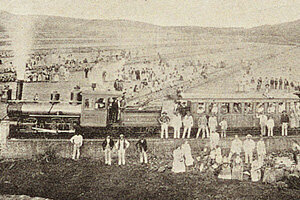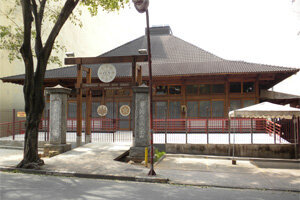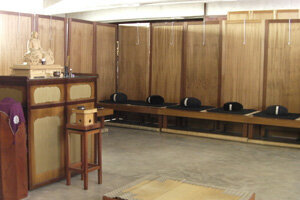Use of Cookies
Our website uses cookies to facilitate and improve your online experience.
Brazil was discovered by the Portuguese Pedro Alvarez Cabral in 1500. Until the 18th century it was a Portuguese colony. In the beginning, woods like the tree called "Brazil", used for clothes dyeing, was then exported to Europe from the colony. The export of wood gradually reduced and was replaced by the sugar cane that was brought to Brazil. The cultivation of sugar cane expanded and Brazil became responsible for half of world’s sugar production. The cultivation of coffee that was also brought to Brazil from Africa, and has flourished and expanded to what it is today. But this coffee cultivation needed an intensive human labor.
Brazil became independent from Portugal in 1822 and became a republic in 1889. In Brazil, the slave labor was very important, but this slavery was abolished in 1888.
In order to prevent the devastation of the agricultural system, the Brazilian government sought out immigrants that would work as free agriculture laborers.
In the early 19th century about 8 million people immigrated to Brazil from Europe. But the people that came to be farm workers, however, rebelled because of the poor living conditions, and the harsh treatment they reiceived was as bad as what the slave workers had had to live through. The countries that were sending out immigrants stopped their emigration policy and the Brazilian agriculture was again in lack of workers.
 The Brazilian government had serious difficulties due to the shortage of farm workers and expressed to the Japanese government the intention to receive immigrants. In 1908 a ship with Japanese immigrants arrived at the port of Santos, Brazil. They came as contract laborers and started to work, but like the Europeans before them, more and more of the Japanese left the plantations where harsh conditions and bad living environment were the norm.
The Brazilian government had serious difficulties due to the shortage of farm workers and expressed to the Japanese government the intention to receive immigrants. In 1908 a ship with Japanese immigrants arrived at the port of Santos, Brazil. They came as contract laborers and started to work, but like the Europeans before them, more and more of the Japanese left the plantations where harsh conditions and bad living environment were the norm.
By themselves, the Japanese immigrants gathered their funds to buy lands to cultivate and created agricultural cooperatives, which promoted a great expansion to Brazilian agriculture.
Many Japanese immigrants became landowners, succeeding as independent farmers, increasing their income, and living a rich life.
Times went by and the number of immigrants expanded. Groups of Japanese settlements took form and an interest in Buddhism transmitted by their ancesters start to gather.
In the early days of immigration to Brazil, Buddhist believers were also part of the immigrant work force, but they were entirely dedicated to the farm and could not work on their religious problems. In 1938 the Rev. Shozen Akiyama visited various parts of Brazil and his speeches impressed many people, but unfortunatly the World War II stopped the work of his successors.
 In 1952 the Rev. Chikan Yasugi came with the immigrant ships to start missionary work with other believers, and submit a letter of request to the then Head Priest of Sotoshu Rousen Takashina Zenji, for the formal settlement of a Sotoshu Missionary Center in Brazil.
In 1952 the Rev. Chikan Yasugi came with the immigrant ships to start missionary work with other believers, and submit a letter of request to the then Head Priest of Sotoshu Rousen Takashina Zenji, for the formal settlement of a Sotoshu Missionary Center in Brazil.
Receiving the request, the Takashina Zenji came to Brazil in 1955. The Master traveled around South America for 3 months and did speeches in 800 places, leaving a deep impression on the people.
For this occasion the first Zen temple in Brazil was built.
After the return of the Zen Master to Japan, he appointed the Rev. Ryohan Shingu as Director of the South America Budhist Mission, and in 1959, was built the Temple Busshinji. In 1995 was built the Main Hall and in 2009 the Meditation Hall "Zazendo" and the "Kaisando" also the "Dai Kankaku" was completed and inaugurated.
The Temple Busshinji routine begins at dawn, at 6:30 every morning. It starts with the zazen session and the morning offices are performed from 7:30. Breakfast is at 8:30. The usual Brazilian breakfast is bread and coffee. In the morning we clean the temple. When there is a funeral, in Brazil the burial or the cremation must be done within a day of the death. When there is a call related to a funeral, we prepare as soon as possible the materials needed and wait for the car to pick us up to go to the ceremonial place. Sometimes it takes all day to arrive for a funeral at a distant place.
 Evening Zazen Session starts from 6:00pm. Wednesday and Saturday is held the Zazen Session for beginners. Mostly beginners interested in Zazen are non Japanese students. There is a wide variety of professionals: students, medicine doctors, etc., all interested in Zazen. When the evening Zazen Session finishes, the participants chant the "Hannya Shingyo" (The Heart Sutra), led by the members of the Zazen Group, who are responsible too for the activities.
Evening Zazen Session starts from 6:00pm. Wednesday and Saturday is held the Zazen Session for beginners. Mostly beginners interested in Zazen are non Japanese students. There is a wide variety of professionals: students, medicine doctors, etc., all interested in Zazen. When the evening Zazen Session finishes, the participants chant the "Hannya Shingyo" (The Heart Sutra), led by the members of the Zazen Group, who are responsible too for the activities.
On Saturdays and Sundays are held annual memorial services. On these occasions, people who work and so cannot meet with their relatives as often as they would like, can deepen their family ties and pray together.
It is increasing frequant for people to come to pray before the tablets of their ancestors or to ask for guidance, for example, their children are catholic and they are worried about their future.
In recent years young people have the same symptoms as the Nikkei (Japanese descendents) in Brazil, and are becoming indifferent to religion.
To make young people more interested in Buddhism, the temple has a lot of activities.